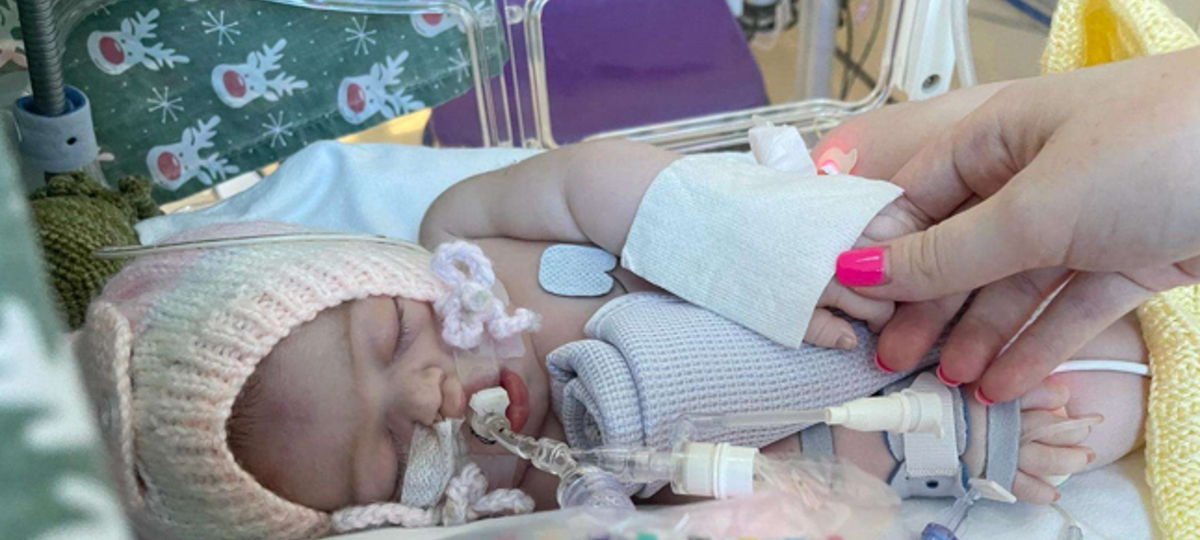
https://www.gosh.nhs.uk/news/researchnanodiamonds-and-hormones-used-in-rare-condition-to-promote-lung-growth/
Nanodiamonds and hormones used in rare condition to promote lung growth
27 Aug 2025, 9 a.m.
An international research team led by Great Ormond Street Hospital and University College London in the UK, and KU Leuven in Belgium, is using 3D-printing and nanodiamonds, to design treatments that could help babies repair their damaged lungs while still in the womb, according to new research published in the Blue Journal (American Journal of Respiratory and Critical Care Medicine).
Congenital Diaphragmatic Hernia (CDH) is a devastating disease affecting 1 in 3,000 newborns. CDH means that the diaphragm (the muscle between the abdomen and the chest) has not fully developed. As a result, organs that are supposed to sit within the abdomen can easily move into the chest cavity and crush fragile growing lungs, meaning the baby doesn’t have space to develop fully formed lungs. In the severest form, and when left untreated, less than 25% of babies born with CDH will survive after birth.
Current treatment can involve delicate surgery during pregnancy to insert a surgical balloon into the baby’s windpipe, to stimulate the lungs to grow (known as fetoscopic tracheal occlusion or FETO). This improves survival to 50% but a better treatment is needed urgently. Vascular endothelial growth factor (VEGF) is a growth hormone which supports lung development in pregnancy but is significantly lower in the lungs of babies with CDH.
To deliver more VEGF to the baby’s lungs in a safe, controlled and sustained way, the teams attached VEGF to a microscopic delivery system made from nanodiamonds – carbon nanoparticles smaller than the thickness of a human hair, and that on their selves are harmless. The work was developed in large part at the Zayed Centre for Research and benefitted from around a quarter of a million pounds from GOSH Charity.
To test the effectiveness of the VEGF delivery system, the team developed lab-grown human ‘mini lungs’ with key features of CDH and worked with different animal models of the condition. Through a number of comparisons, the team were able to show that giving the VEGF delivery system at the same time as FETO led to the healthiest lungs.
Families affected by CDH
CDH effects around 1 in 3,000 births and Great Ormond Street Hospital will treat around one child a month for this condition. Through a multidisciplinary service between GOSH and UCLH, families are currently offered appointments, counselling and the balloon procedure (FETO) when appropriate.
Amelia's story
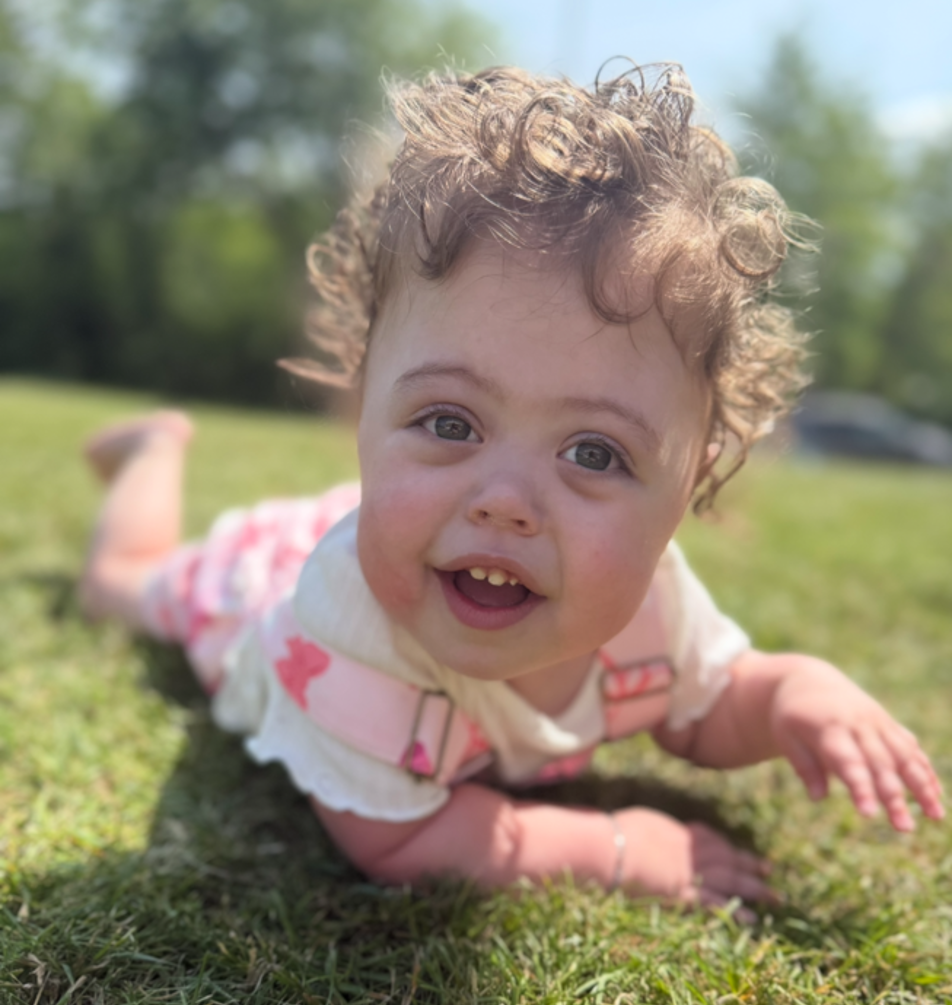
Amelia was just a few days old when she was transferred to GOSH for lifesaving surgery for CDH. Her condition was identified on an ultrasound scan while mum Georgia was pregnant.
Her mum Georgia said: “My pregnancy and birth was a complete whirlwind after Amelia was diagnosed with CDH. It wasn’t something I’d heard of before and then I realised how serious it was. I had extra scans and treatment at my local hospital, and the team hoped Amelia’s condition would only be moderate.
“Unfortunately, after Amelia was born, the clinical team told me how serious her condition was as her bowel and stomach had moved into her chest. She was taken to GOSH and put on a machine to support her breathing and heart. The team thought she might need to be on it for a few weeks, but she was off within a couple of days. She’s such a little fighter! New research like this is great to see how experts are trying to make the treatment for CDH more successful for all children, and less invasive."
Amelia spent four months recovering on the neonatal unit at GOSH and then a further three months at her local hospital, before returning home with mum Georgia.
Roman's story
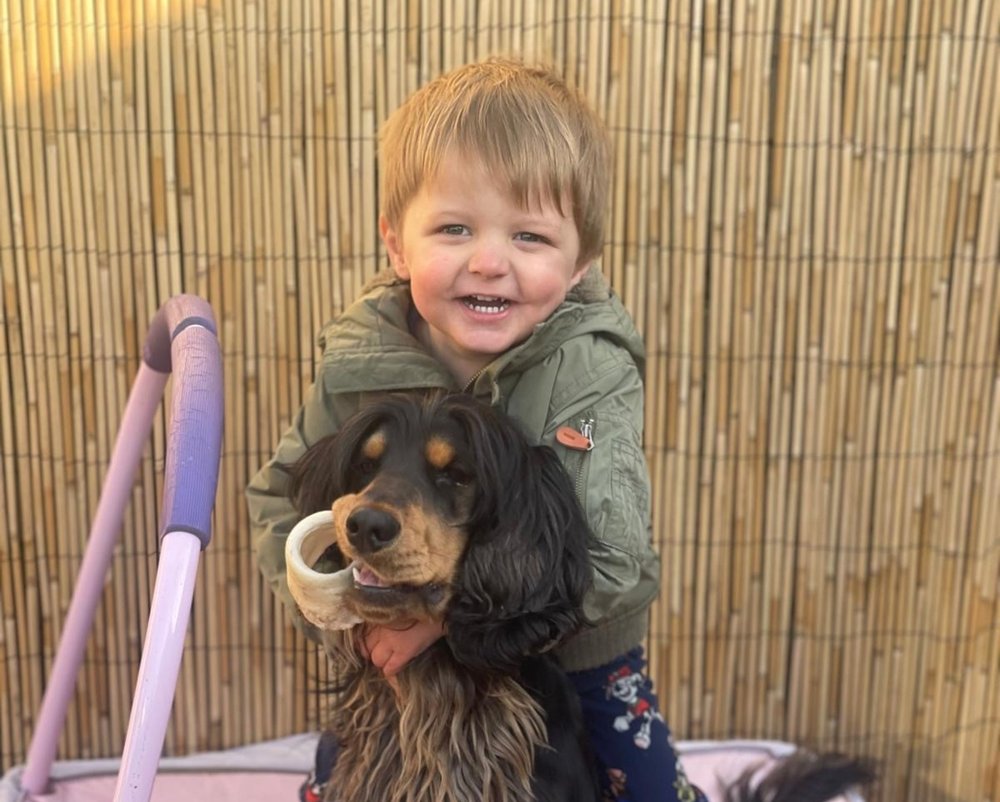
Mum, Danielle, had Roman at 38 weeks pregnant but it was 10 hours before she was allowed to see him – he was simply too poorly.
Roman had to be taken by an emergency ambulance and ‘blue lighted’ to Great Ormond Street Hospital where he would remain for months. Thankfully, he survived the journey and was quickly hooked up to a machine to provide long-term heart and lung support so his little body could rest in GOSH Neonatal Intensive Care Unit.
At 20 days old he had major surgery to move his organs back into his abdomen and close the hole in his diaphragm. While the surgery was successful, there was no guarantee of his survival, but you’d have no idea looking at this little boy on his balance bike today.
“When we were first discharged, you could see that Roman needed some time to get his lungs up and working again, to regain his strength but now, you’d never know!
We went through a lot with our little boy and, while he’s bounced back, not everyone is so lucky, especially those with the severest forms of CDH. To think that in the same building we go for outpatients appointments, scientists are developing new technologies with nano diamonds and 3D printers is crazy.”
“Anything that can be done to give children like our son a fighting chance has to be worth a shot.”
Mum Danielle has written a book on the ups and downs of Roman’s story and even made sure that the NICU has a copy for other parents going through their CDH ‘journey’.
Freya's story
Freya's mum, Kayleigh, knew her daughter had CDH after a scan at UCLH at 15 weeks but all signs suggested that Freya was a ‘moderate’ case. However, once Freya was born, it became very clear that her condition was much more serious.
At 11 days old, she was successfully treated with a surgical patch and went into recovery on NICU at GOSH. She has just been discharged from GOSH after spending the first 5 months of her life here and the family are looking forward to having some normalcy back in their lives.
Big sister Gracie, 4 years old, has been in and out of hospital accommodation with the family as they stayed nearby, thanks to Sick Children’s Trust.
“We didn’t think Freya’s condition was severe enough to need surgery while still in the womb but that is an option for the most severe cases.
“Knowing what I know now, and all Freya has been through – plus the rest of the family – any breakthrough that can improve the chances of those surgeries working, or even offer more treatment options for those of us who couldn’t get FETO, is a brilliant thing.”
Modelling congenital diaphragmatic hernia
To mimic the disease and compression of the lungs seen in CDH for humans, the teams used 3D-printing directly around human lung tissue grown in the lab . These lab-grown mini-lungs were underdeveloped when compressed by the 3D printing, simulating the condition, and therefore good models for the condition and testing the VEGF delivery system. The video above shows the 'natural growth' on the left and the 'compressed growth' on the right.
Co-lead author, Dr Stavros Loukogeorgakis, a GOSH surgeon Associate Professor of Paediatric Surgery at UCL Great Ormond Street Institute of Child Health said: “Nanodiamonds, 3D printing and growth hormones in the womb all sounds a bit ‘science fiction’ we know, but this research is really showing us what is possible. As the saying goes: ‘diamonds are forever’, so we now want to create a delivery system that would break down as the baby grows. This isn’t an insurmountable problem, and we could be in a place to offer this to the first families in as little as five years.”
Professor Paolo De Coppi, GOSH surgeon NIHR Professor of Paediatric Surgery at UCL Great Ormond Street Institute of Child Health said: “VEGF is a powerful mediator of growth in our bodies and can help us to create new blood vessels and muscle, but uncontrolled or in large doses it can contribute to disease. The use of a delivery system like the nanodiamonds was crucial for us to test if VEGF could do what we want it to do, where we want it, in a controlled manner. By working with multidisciplinary, international teams, we’ve been able to use various and diverse models that we wouldn’t be able to do if we worked alone – collaboration is key.”
The National Institute for Health and Care Research (NIHR) supported this work though the NIHR GOSH Biomedical Research Centre and an NIHR Fellowship to one of the lead authors, and the research was supported by BREATH Consortium for Lung Regeneration Longfonds and CDH UK - The Congenital Diaphragmatic Hernia Charity (1106065), supporting families through research, information, emotional and practical support.
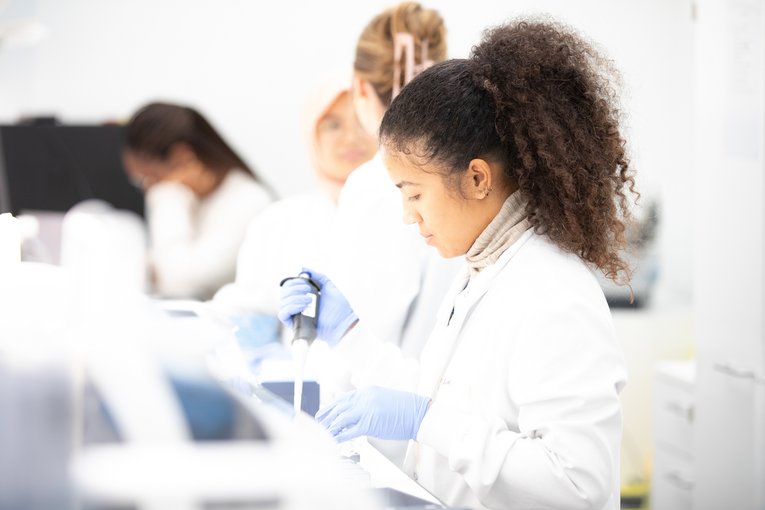
NIHR launches £13.7m investment into brain tumour research
The National Institute for Health and Care Research (NIHR) has announced a £13.7 million investment that will support ground-breaking research to develop novel brain tumour treatments in the UK.
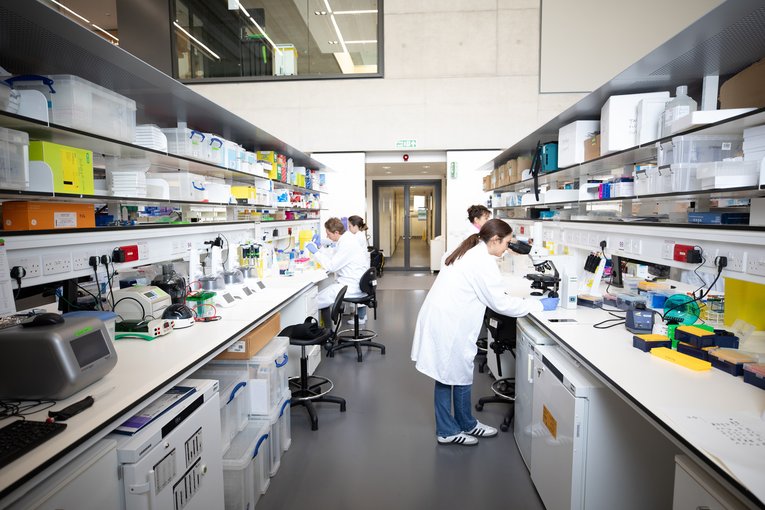
New consortium aims to help improve care for arthritis patients
A new UK-led research group, including Great Ormond Street Hospital and University College London, aims to improve the lives of children, young people and adults with arthritis by defining for the first time what being in ‘remission’ from arthritis truly

Update for patients and families on industrial action - December 2025
As you may be aware, some of our Resident Doctors will be taking part in planned industrial action from 7am on Wednesday 17 December to 7am on Monday 22 December.
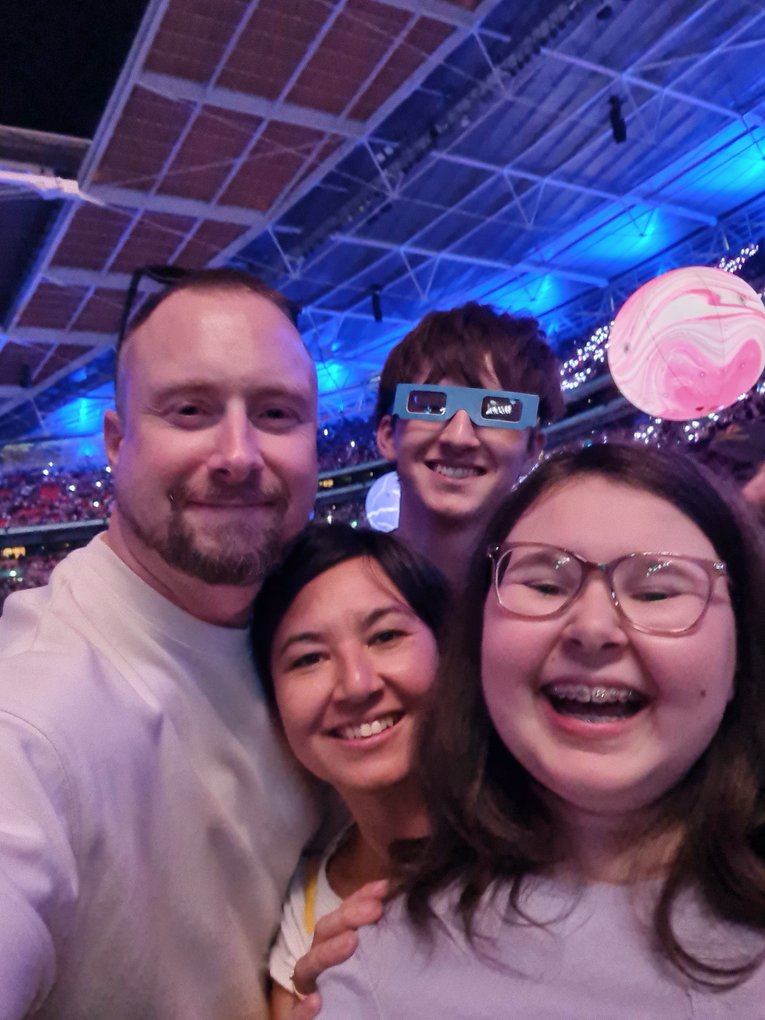
‘Ready-made’ T-cell gene therapy tackles ‘incurable’ T-Cell leukaemia
A groundbreaking new treatment using gene-edited immune cells, developed at GOSH and UCL has shown promising results in helping children and adults fight a rare and aggressive cancer
